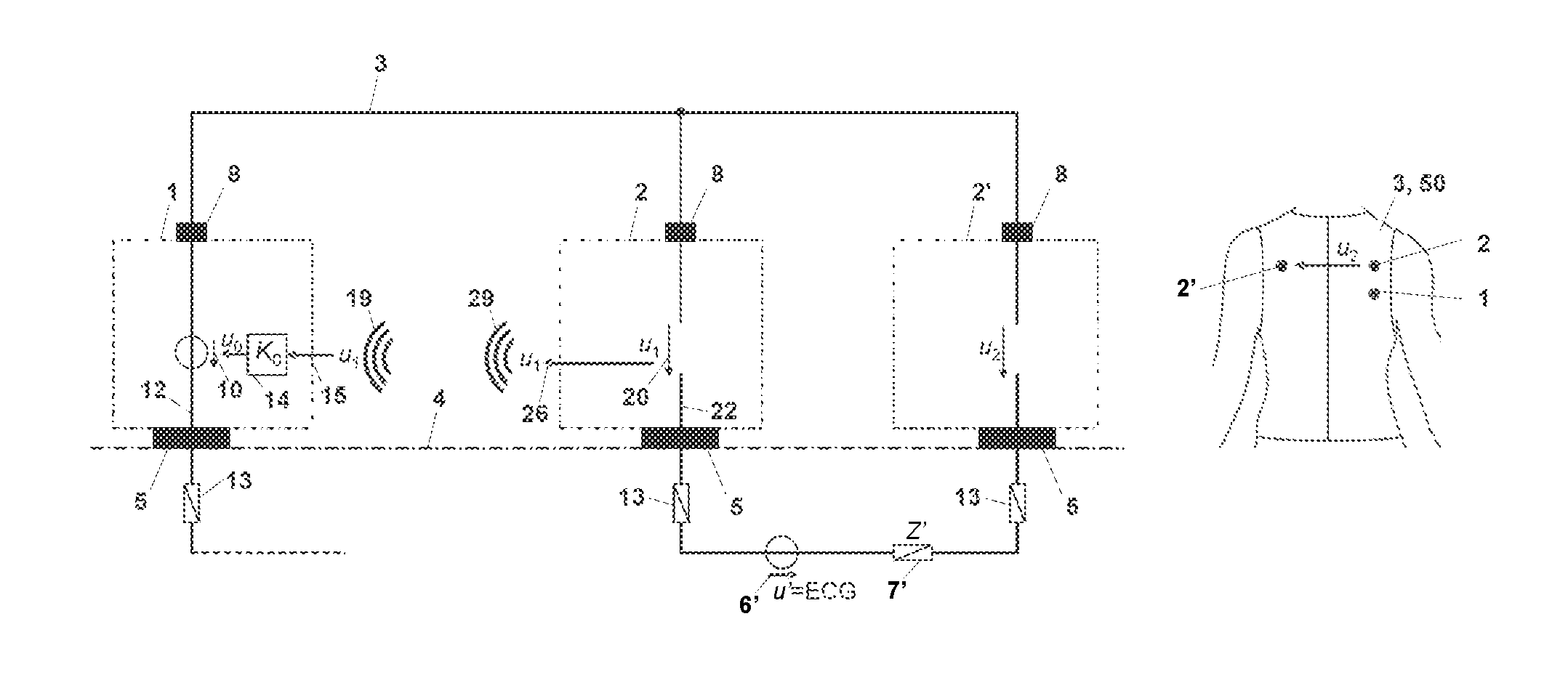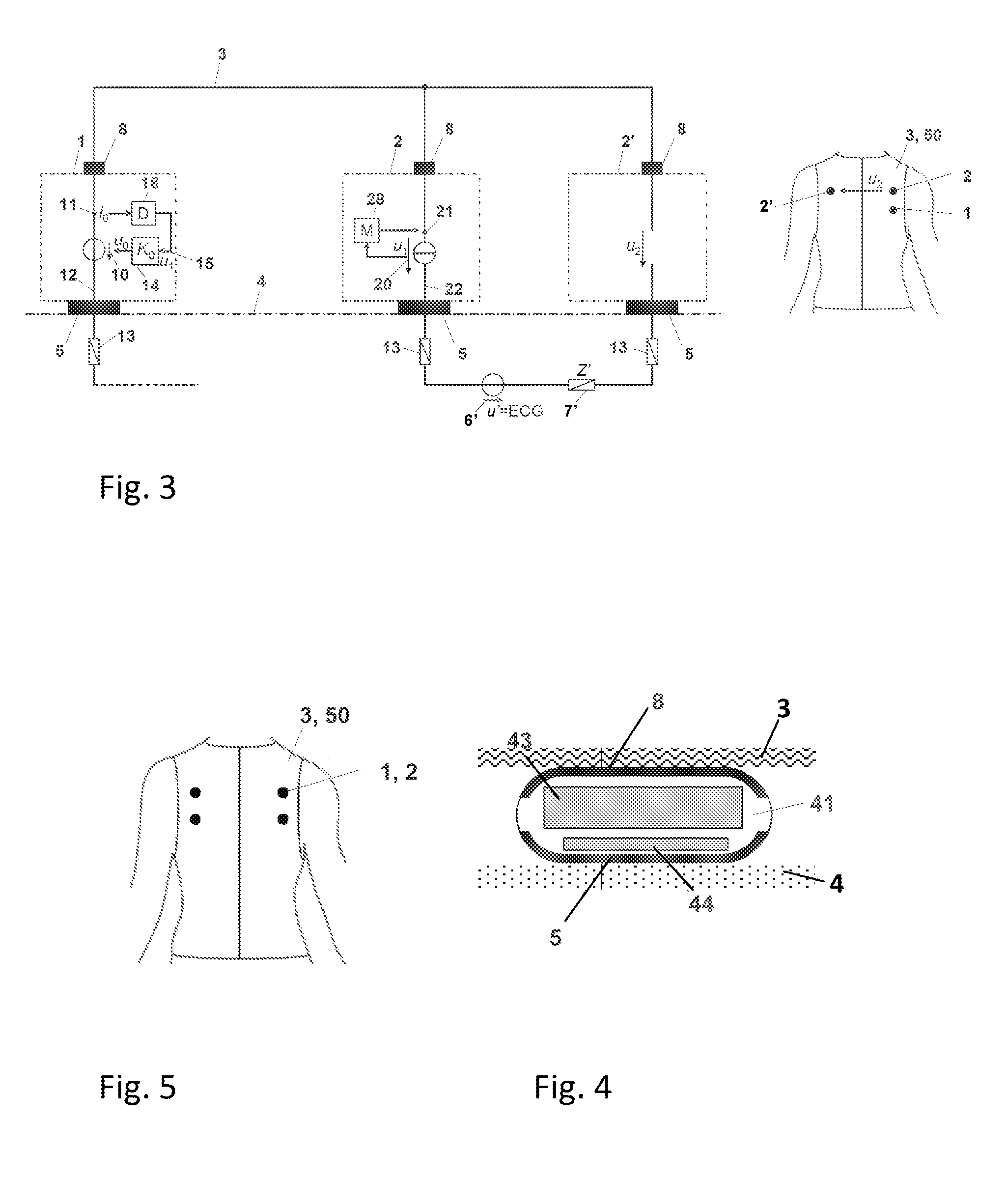Measurement device for measuring bio-impedance and/or a bio-potential of a human or animal body
a biopotential and measurement device technology, applied in the field of measurement devices for measuring bioimpedance and/or biopotential of human or animal bodies, can solve the problems of poor overall integration, poor overall integration, and difficult integration, and achieve the effects of less impact, easy manufacturing, and high skin impedan
- Summary
- Abstract
- Description
- Claims
- Application Information
AI Technical Summary
Benefits of technology
Problems solved by technology
Method used
Image
Examples
Embodiment Construction
[0037]FIG. 2 illustrate a measurement device for measuring a bio-potential of a human or animal body and destined to be worn on the body, according to an embodiment. The measurement device comprises a reference electrode sensor 1, a first measuring electrode sensor 2, and a second measuring electrode sensor 2′. Each of the electrode sensors 1, 2, 2′ comprises a first electrical contact 5 destined to be in electrical contact with the skin of the body when the measurement device is worn on the body, and a second electrical contact 8. The measurement device further comprises a single electrical connector 3 electrically connecting the electrode sensors 1, 2, 2′ with each other via the second electrical contact 8.
[0038]The reference electrode sensor 1 comprises a voltage source 10 controllable by a controller 14. The first measuring electrode sensor 2 comprises a voltage measuring device 20. The voltage measuring device 20 is configured for measuring a voltage u1 between the first and se...
PUM
 Login to View More
Login to View More Abstract
Description
Claims
Application Information
 Login to View More
Login to View More - R&D
- Intellectual Property
- Life Sciences
- Materials
- Tech Scout
- Unparalleled Data Quality
- Higher Quality Content
- 60% Fewer Hallucinations
Browse by: Latest US Patents, China's latest patents, Technical Efficacy Thesaurus, Application Domain, Technology Topic, Popular Technical Reports.
© 2025 PatSnap. All rights reserved.Legal|Privacy policy|Modern Slavery Act Transparency Statement|Sitemap|About US| Contact US: help@patsnap.com



